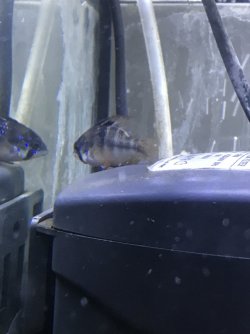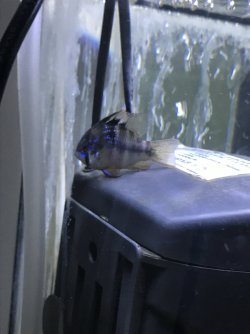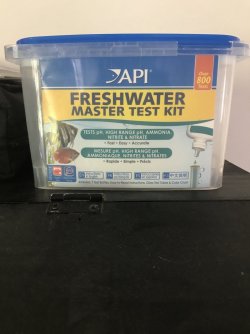BolivianRams
New Member
Hey all. Not sure if this is the right forum, I had gotten 2 bolivian rams from our local pet shop. They had settled in okay the first few days with the 4 rummy-nose tetras. I’ve just began to notice that one of the rams just stays at the top of the tank. I changed their water a few days ago because the PH was not good at all, I only started to notice the PH was bad when the rams fins looked burnt and they weren’t happy, I did about 2 water changes until the water was right. Their water is fine now. But my question is. Does anyone have similar problem or know what’s going on.




